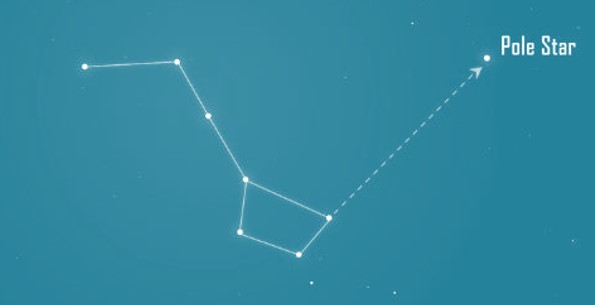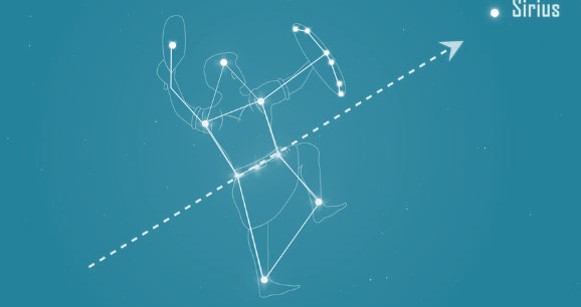A group of stars that has a recognisable shape is called a Constellation.
A constellation has a large number of stars, but only a few of those stars are visible to us as a pattern. This is because they are bright compared to the other stars in the constellation.
There are some known constellations named by ancient astronomers. Let us study a few of them in detail.
Ursa Major
This constellation forms the shape of a ladle or a question mark.
There are three alternative names for this constellation: The Great Bear, The Big Dipper and Saptarshi.
There are 7 stars that form this constellation. Three of them form the handle of the ladle and four form the bowl.

The Pole Star which is situated along the axis of the earth can be detected using the Ursa Major. Imagine a straight line passing through the two stars at the end of this constellation. Extending this line northwards, five times the distance between the two stars will lead us to a not so bright, Pole star.
Orion
It is one of the most magnificent and recognisable constellations that can be seen during the late evenings of the winter season. It consists of 7 or 8 luminous stars.
Its alternative name is The Hunter. That’s because this constellation forms the pattern of a hunter. Three bright stars represent the belt of the hunter and the other four bright stars form a quadrilateral.
The Orion can be used to locate the brightest star in the night sky, called Sirius. Imagine a straight line passing through the three middle stars of Orion. Extending this line towards the eastern direction leads us to Sirius.

Cassiopeia
This constellation is named after a queen called Cassiopeia of Greek mythology.

Cassiopeia
It consists of 5 stars that form a distorted ‘W’ or ‘M’. It is visible during the early part of winter nights.
Summary
| Constellation | A group of stars that has a recognisable shape |
| Ursa Major | Consists of 7 stars in the shape of a lade
Also known as The Great Bear, Big Dipper and Saptarishi |
| Orion | Consists of 3 stars forming a belt and 4 stars a quadrilateral
Named after a hunter in Greek mythology |
| Cassiopeia | Consists of 5 stars forming a distorted W or M
Named after a queen in Greek mythology |
Did you know?
A constellation is essentially a specific area of the celestial sphere, though the term is more often associated with a chance grouping of stars in the night sky. Technically, star groupings are known as asterisms.
Also Check:
